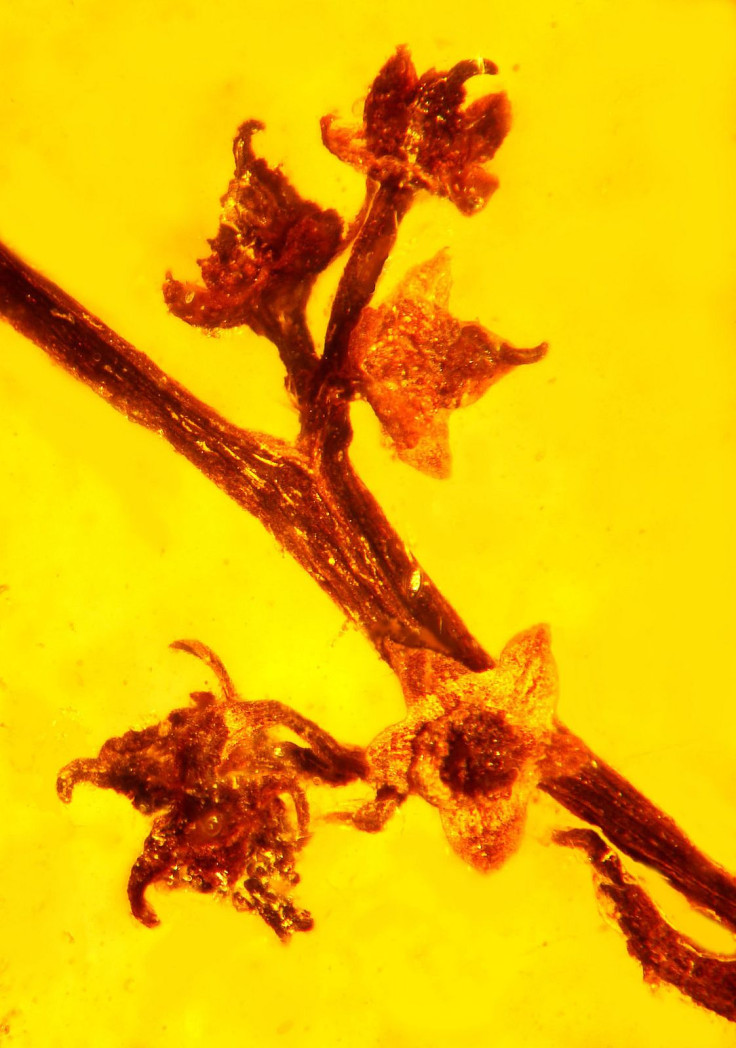100-Million-Year Old Amber Fossil Preserves Ancient Flowers Caught In The Middle Of Sexual Reproduction
Researchers have discovered a “perfectly-preserved” example of sexual reproduction in flowering plants in a 100-million-year old amber fossil.

The fossilized record of reproduction was discovered by researchers from Oregon State University. The amber contains an extinct flower dating to the mid-Cretaceous period. The research, led by George Poinar, Jr., from the OSU College of Science, was published in the Journal of the Botanical Institute of Texas. The plant was identified as a new genus and species and was named micropetasos burmensis.
Per the research paper, the amber fossil was taken from a mine in Myanmar. The fossil contains 18 plants, 10 of which can be studied, and the flowers are only missing the petals. According to the researchers, the reproduction process seen in the 100-million-year old fossil is the same process used by modern flowering plants, or angiosperms. What interests the researchers most are the preserved microscopic pollen tubes, beginning the seed-formation process, according to the press release.

According to the researchers, “The numerous stamens have bisporangiate anthers and are of different lengths within the flower. As preserved, they are in a tight cluster appressed around the pistil. The gynoecium consists of a single carpel, whose short, curved style has an attenuate tip lacking an enlarged stigma.” The stamen are the male reproductive structures of the flower, the pistil is a group of fused carpels, the female reproductive structures, and the stigma, which receives the pollen. The bisporangiate anthers contain two different sporangia, the structure used to contain and produce spores.
The researchers believe the pollen was sticky which means insects would carry the pollen from plant to plant to start the reproductive process. The mid-Cretaceous period marked the beginning of a change in the evolution of plant life, from conifers, ferns and mosses to smaller flowering plants, note the researchers. Poinar said in a statement, “It’s interesting that the mechanisms for reproduction that are still with us today had already been established some 100 million years ago.”
Poinar said this is the first Cretaceous flower specimen showing the pollen tube entering the stigma. “This is the beauty of amber fossils. They are preserved so rapidly after entering the resin that structures such as pollen grains and tubes can be detected with a microscope,” said Poinar.
© Copyright IBTimes 2024. All rights reserved.












